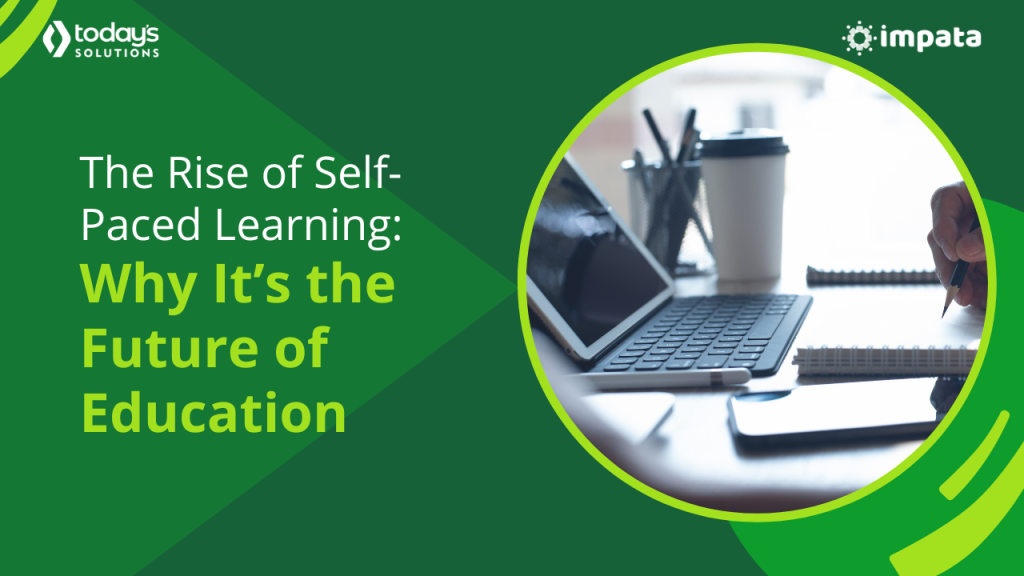
Education is undergoing a transformative shift. In a world where flexibility and personalization have become the norm, traditional learning models are losing their appeal. More than ever, learners are seeking environments that adapt to their unique needs, schedules, and goals. Enter self-paced learning—a revolutionary approach that is reshaping the education landscape.
What is Self-Paced Learning?
Self-paced learning is an educational model that allows learners to progress through course content at their own speed. Unlike traditional classroom setups, where everyone must keep the same pace, self-paced learning puts control into the hands of the learner.
Key Characteristics of Self-Paced Learning
Self-paced learning is defined by two major characteristics that make it stand out as a transformative educational approach:
1. Flexibility
One of the core advantages of self-paced learning is its unmatched flexibility. Learners are no longer bound by rigid schedules or fixed locations. Instead, they can choose when and where to engage with course materials. This adaptability is particularly beneficial for:
- Working Professionals: Balancing full-time jobs with upskilling efforts. Self-paced learning allows them to dedicate evenings, weekends, or even lunch breaks to advancing their knowledge.
- Parents or Caregivers: Managing familial responsibilities while pursuing education becomes less overwhelming with the ability to fit lessons into free moments.
- Global Students: Regardless of time zones or geographical barriers, learners can access materials and engage with content at their convenience.
This characteristic ensures that education integrates seamlessly into diverse lifestyles, making learning opportunities more inclusive and accessible.
2. Autonomy
Self-paced learning shifts the control of education from the instructor to the learner, empowering students to take charge of their academic journey. This autonomy fosters a sense of independence and accountability, key skills for success in both education and life.
- Personalized Learning Paths: Students can focus on areas they find challenging, revisiting lessons and resources as needed, rather than following a one-size-fits-all approach.
- Self-Discipline Development: By managing their schedules and progress, learners naturally develop better time management and organizational skills.
- Confidence Building: Taking ownership of their education boosts learners’ confidence as they achieve milestones at their own pace.
The blend of flexibility and autonomy ensures that self-paced learning is not just convenient but also deeply enriching, equipping learners with both knowledge and critical life skills. This model transforms education into a partnership between students and their learning platforms, fostering long-term success.
Benefits for Learners
- Increased engagement as students absorb content at their own pace.
- Reduced stress due to the absence of rigid deadlines or pressure to keep up with peers.
- The ability to revisit challenging topics multiple times until they’re fully understood.
Benefits for Educators
- More time to focus on developing quality content and interactive activities.
- Insights into student progress through detailed analytics, enabling targeted support.
- Scalability, allowing educators to reach more students without compromising the learning experience.
How Self-Paced Learning Empowers Students
Self-paced learning is more than just a trend; it’s a proven method to boost student success. Studies show that when learners have the freedom to control their pace, they feel more motivated and are more likely to complete their courses.
Consider a working professional balancing a full-time job while pursuing an online certification. A self-paced course allows them to dedicate evenings or weekends to learning without the fear of falling behind. Similarly, a college student struggling with a specific subject can revisit lessons as needed, ensuring a strong grasp of the material before moving forward.
In real-world examples, students have reported higher satisfaction levels with self-paced courses due to the flexibility and control they offer. Educators, too, have noted improved engagement and performance metrics among students who embrace this model.
How ImpataLMS Facilitates Self-Paced Learning
At the heart of this learning revolution lies ImpataLMS, a platform designed to empower both learners and educators in a self-paced ecosystem.
Key Features of ImpataLMS for Self-Paced Learning
- Progress Tracking: ImpataLMS provides learners with a clear view of their progress, helping them stay motivated and on track.
- Interactive Modules: Engaging content like videos, quizzes, and assignments makes learning enjoyable and effective.
- Analytics for Educators: Detailed insights into student performance allow educators to identify strengths and areas for improvement, enabling personalized guidance.
- Flexible Access: With mobile-friendly interfaces, learners can access courses anytime, anywhere—whether at home, on the commute, or during a break.
ImpataLMS not only simplifies self-paced learning but also ensures it’s engaging and impactful. It’s the bridge between quality education and the modern learner’s need for flexibility.
As the demand for flexible, personalized learning continues to grow, self-paced learning stands out as the future of education. It empowers learners to take control of their journey, boosts engagement, and delivers real results.
We’re committed to making self-paced learning accessible, effective, and enjoyable. Ready to future-proof your educational offerings?
Explore ImpataLMS today and see how we can transform the way you teach and learn.
What’s your take on self-paced learning? Share your thoughts in the comments.
